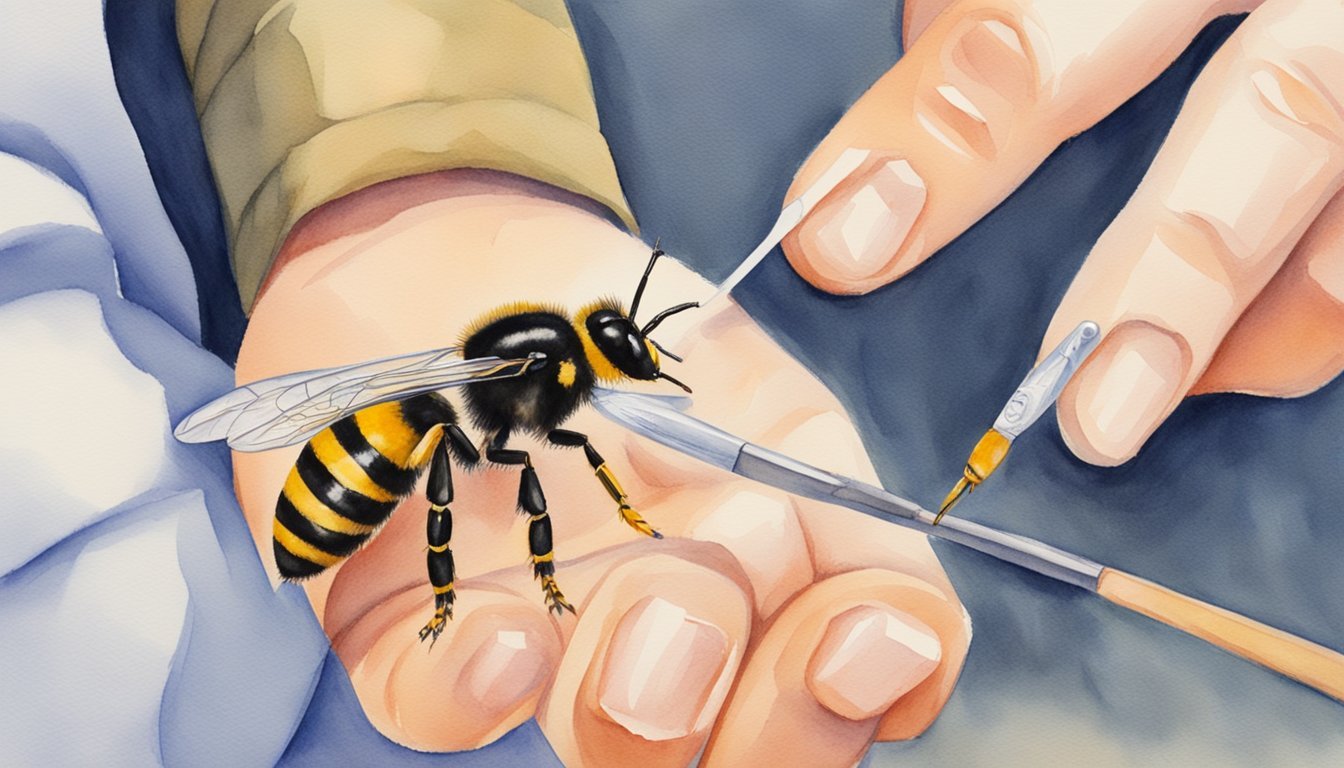Understanding Wasp Behavior and Prevention
When considering how to prevent wasp stings, it is critical to understand wasp behavior, identify their habitats, and engage in safe outdoor practices, especially during their active months.
Identifying Different Wasps and Their Habitats
Different types of wasps, including yellow jackets and hornets, can be found in various environments. Yellow jackets often create nests underground or in dark, enclosed spaces. Hornets, on the other hand, tend to build their papery homes higher up in trees and shrubs. Recognizing these habitats is essential for avoiding unwelcome encounters.
Seasonal Patterns and Avoiding Attraction
Wasps are more active and aggressive during the warmer months and in the fall when their food supplies begin to dwindle. They are attracted to proteins and sweet foods, making picnics and outdoor dining potential hotspots for wasp activity. Minimizing the use of perfumes and scented lotions can also reduce the likelihood of attracting these insects.
Safe Practices in Outdoor Spaces
Engaging in safe practices while outdoors, such as during gardening or picnics, helps prevent encounters with wasps. Wearing protective clothing, being cautious around wasp-prone areas, and understanding how to respond to a wasp presence can reduce the risk of stings. Closing garbage bins and covering food are also effective prevention strategies.
By closely observing these practices and being aware of wasp behavior and their environments, one can successfully deter unwanted interactions with these insects and enjoy the outdoors safely.
First-Aid and Medical Interventions for Wasp Stings

When dealing with a wasp sting, quick action is crucial to minimize pain and prevent complications. Here’s how to address a sting efficiently and when to seek further medical assistance.
Immediate Steps After a Wasp Sting
Upon being stung, the foremost step is removing the stinger from the skin, which stops further venom injection. A sideways scrape with a firm object, like a credit card, is advised against using tweezers, which might squeeze more venom into the skin. Next, to mitigate swelling and pain, wash the affected area with soap and water to prevent infection. Applying a cold compress or ice wrapped in a cloth to the sting site for intervals of 10 minutes on and off is recommended to reduce inflammation and ease discomfort.
Home Remedies to Alleviate Symptoms
Home remedies can provide relief from the discomfort caused by a wasp sting. For example, applying a paste made from baking soda and water or soaking the wound in an oatmeal bath can help to neutralize the sting’s venom and soothe itching. While vinegar, meat tenderizer, and toothpaste are commonly suggested, they carry mixed evidence for their effectiveness. If symptoms such as pain and swelling persist, over-the-counter pain relievers and antihistamines may be useful in providing symptomatic relief from the body’s histamine response.
When to Seek Professional Medical Help
Most individuals experience only minor reactions to wasp stings, but in cases of severe allergic reactions, immediate emergency care is imperative. Signs of anaphylaxis include trouble breathing, a rapid heart rate, a drop in blood pressure, dizziness, or swelling of the face or throat. If any signs of a severe allergic reaction occur, administer an epinephrine auto-injector if available and contact emergency services. Even if an epinephrine injection leads to improvement, follow-up with a healthcare provider is necessary, as symptoms may recur. For persistent, severe, or unusual symptoms following a wasp sting, consult a healthcare provider for additional treatment which could include steroids, epinephrine, or a referral to an allergist for further evaluation.

